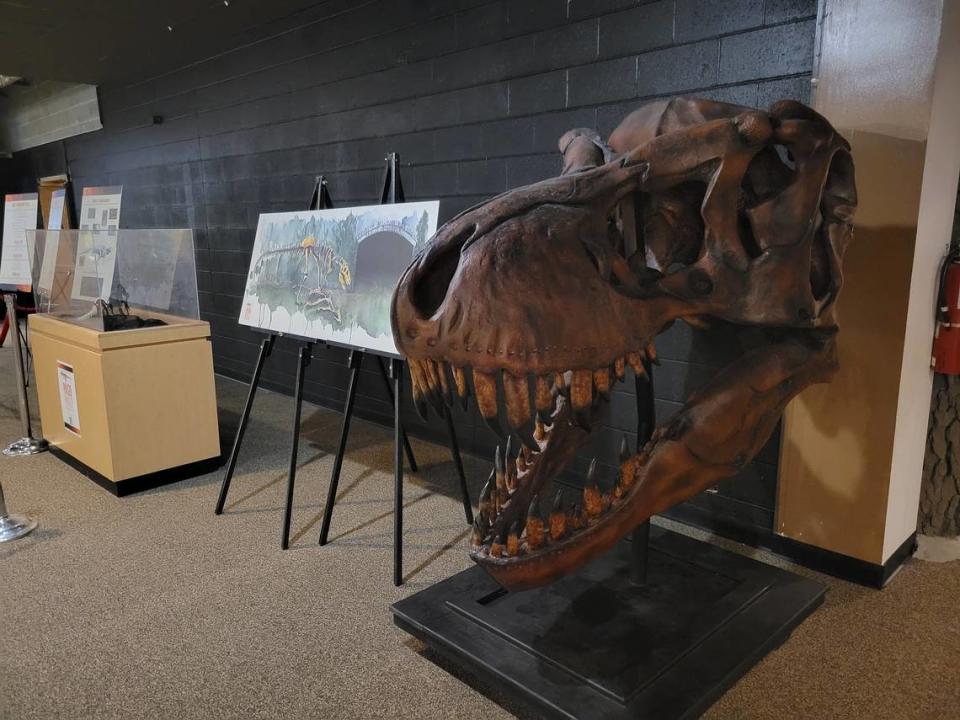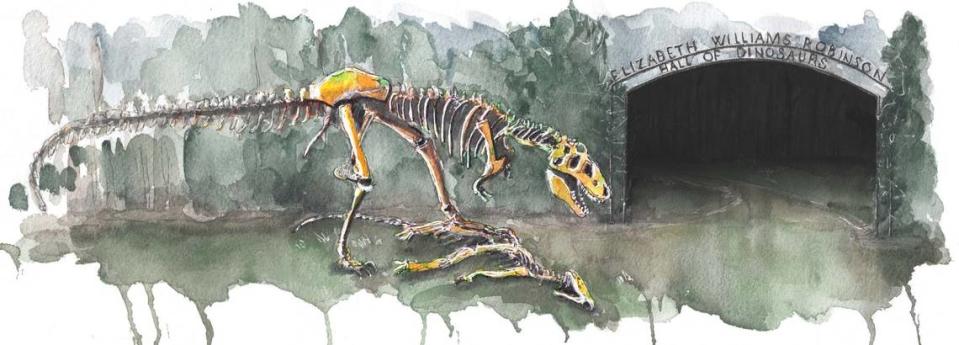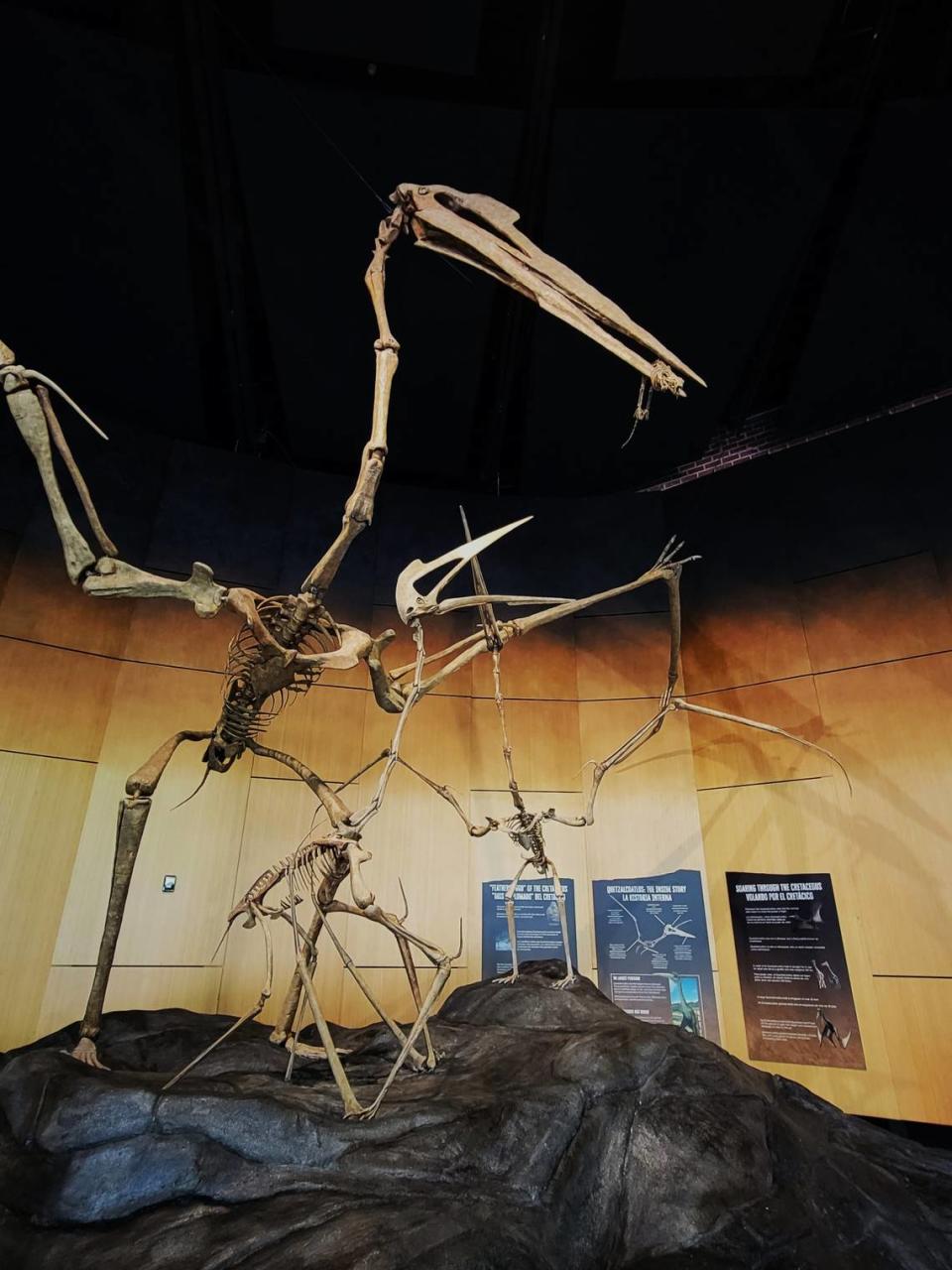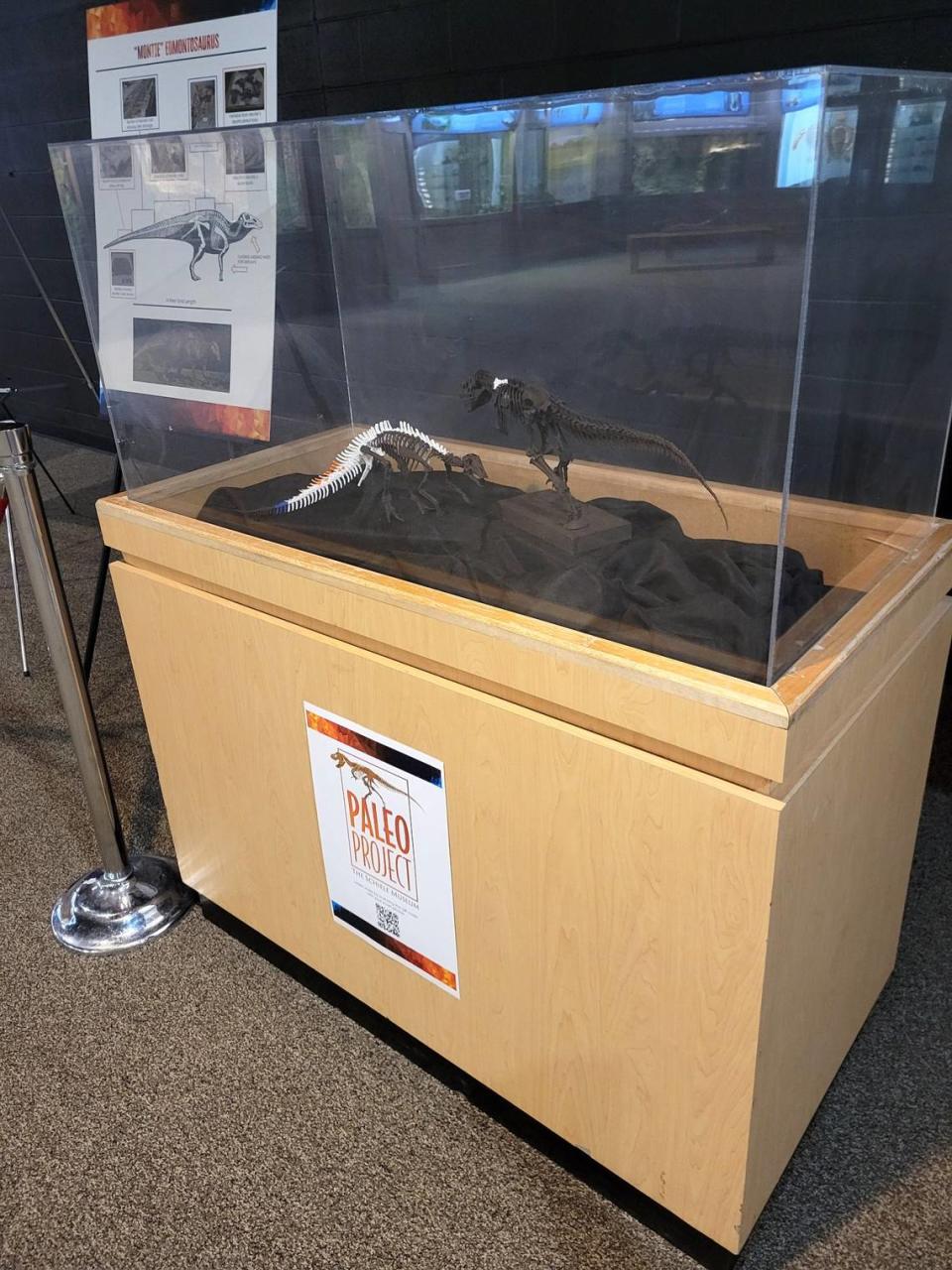Who needs Jurassic Park? Charlotte-area museum to welcome its own ‘Hall of Dinosaurs’
After about 80 million years or so, a species of dinosaur that once roamed parts of North Carolina will be returning to its old stomping grounds in Gastonia.
Appalachiosaurus, otherwise known as the “East Coast T.rex”, and other fossilized friends will make their home in the Schiele Museum of Natural History’s upcoming $3.5 million Hall of Dinosaurs.
The Elizabeth Williams Robinson Hall of Dinosaurs, the centerpiece of the Schiele’s Paleo Project, is under construction and expected to be completed by early 2026. The project is geared to the planning, funding and buildin of the hall.
It also brings in partners from regional museums, including the McWane Science Center in Birmingham, Alabama, in addition to Appalachian State University and The University of New Orleans.
The space is named in honor of Elizabeth Williams Robinson, a lifelong Gastonia resident and early museum supporter. It will offer visitors an immersive experience featuring 14 full-bodied fossil casts of prehistoric creatures, authentic petrified remains and a combination of digital and analog elements that will encourage learning for visitors of all ages.
Colorado-based Triebold Paleontology, an expert in creating replica casts and fossil exhibitions, is also working with the Schiele. Once complete, the space will showcase a variety of specimens, including a partial T.rex and an Edmontosaurus skin impression.
And planning is underway for an educational enrichment program, according to museum marketing director Tiffani Stewart.

A full-circle moment
Nearly two decades ago, the Schiele’s assistant director of interpretation, Tony Pasour, brought paleontologist Robert Bakker to the museum for an educational program with local middle school students.
For those not familiar with Bakker, his likeness has been featured in the Jurassic Park movies. Bakker wears a tattered cowboy hat “and he’s a real showman and a real character in a lot of ways,” Pasour said,
On the day that Nick Brand’s class visited the museum, he was captivated by Bakker’s presentation. He even took home one of Bakker’s large format drawings, which he still has.
Brand went on to earn degrees in geology and geosciences, both with a concentration in paleontology. And not only did Brand just receive his Ph.D. in paleontology at George Mason University, but he will soon return to the Schiele. This time, he’ll be a collaborator on the Paleo Project, where he will work with Pasour to bring the project’s vision to life.

A region rich in rocks but few dino records
Another highly anticipated return to the hall is a visitor favorite T.rex, which was removed last year for repair. Not only will the exhibition area be updated to reflect the latest discoveries about Tyrannosaurus Rex, but dinosaurs believed to have roamed the Carolinas, including the Triceratops and Stegosaurus, will also take up residence.
According to Pasour, working with institutional partners and individual collectors is essential. While the Piedmont may have hidden geological artifacts that merit study, the topography does not support easy excavation.
“In this part of North Carolina we have a lot of igneous and metamorphic rocks, which aren’t conducive to recording life. And all our knowledge about dinosaurs and about prehistoric life in general is all based on geology, on the history that’s written in the rocks,” he said.
In contrast, sedimentary rocks, which are abundant in other parts of the country, provide an opportunity for organic things like leaves and sticks and remnants from animals to get mixed into those sediments. When they harden into new rocks, the organic matter becomes trapped and then preserved for history.
“Because we’re not in a part of a country that has the right kind of rocks, we don’t really have any history books about the prehistoric past of this part of North Carolina. But we know we had the past,” Pasour said. And that’s where the Schiele’s collaborators come in.
Enter Kraig Derstler, emeritus professor of earth and environmental sciences at the University of New Orleans. Desler had a long career of teaching paleontology and collecting a robust catalog of specimens.
But all of those artifacts occupy space, Stewart said. Now that Derstler has retired, the specimens needed a good home.
“So here’s a museum in North Carolina. It has a tremendous market interest in dinosaurs, but not a whole lot of dinosaur material because we live in the wrong part of the world,” Pasour said.
Now they have both.

‘A pretty cool ride’
Pasour, the assistant director of interpretation, has been the museum for awhile. “I sort of became the dinosaur guy at the Schiele Museum over the years in absence of a bonafide paleontology program,” he said. “It’s been a pretty cool ride because I’ve been able to explore this interest in a lot of ways.”
Pasour stressed the importance of bringing cutting-edge science to the exhibition experience. That’s where Brand will come in.
“We need to know what the latest information is, what are the new discoveries,” Pasour said. “The science of paleontology is constantly changing. Once we build an exhibit, if it’s static, then the information is frozen in time.
“We need to ask how we can build and design it in a way that is updateable as the story changes about these things.
“Having the real scientific expertise invested in the project and the organization is critical to do that,” Pasour added. “This is going to be a real research-based exhibit because of that investment.”
Something new for the region
The Schiele Museum wants locals and travelers alike to visit the new exhibition once it opens to the public. They stress that the scale and size of its Hall of Dinosaurs will be a one-of-a-kind exhibit in the Southeast region.
“And people also just love dinosaurs,” Stewart laughed.
She also stressed that there also are some natural history concepts that The Schiele feels are important to impart to people, such as climate change.
“But if you put up a banner outside The Schiele saying come see our climate change exhibits, no one is going to come,” Stewart said. “If you instead say, we’ve got dinosaurs and we can tell the story of Earth through this, there are a lot of lessons that we can learn from the extinction of dinosaurs and how their environment changed over time.
And so that’s partly what dinosaurs can do, help people learn about the earth and the environment in a way that’s really fun and exciting and interesting.”
The Schiele Museum of Natural History’s Paleo Project is 95% funded. Visitors can expect the Carolina’s own Jurassic exhibition to fully open in the first quarter of 2026.

More arts coverage
Want to see more stories like this? Sign up here for our free “Inside Charlotte Arts” newsletter: charlotteobserver.com/newsletters. And you can join our Facebook group, “Inside Charlotte Arts,” by going here: facebook.com/groups/insidecharlottearts.

